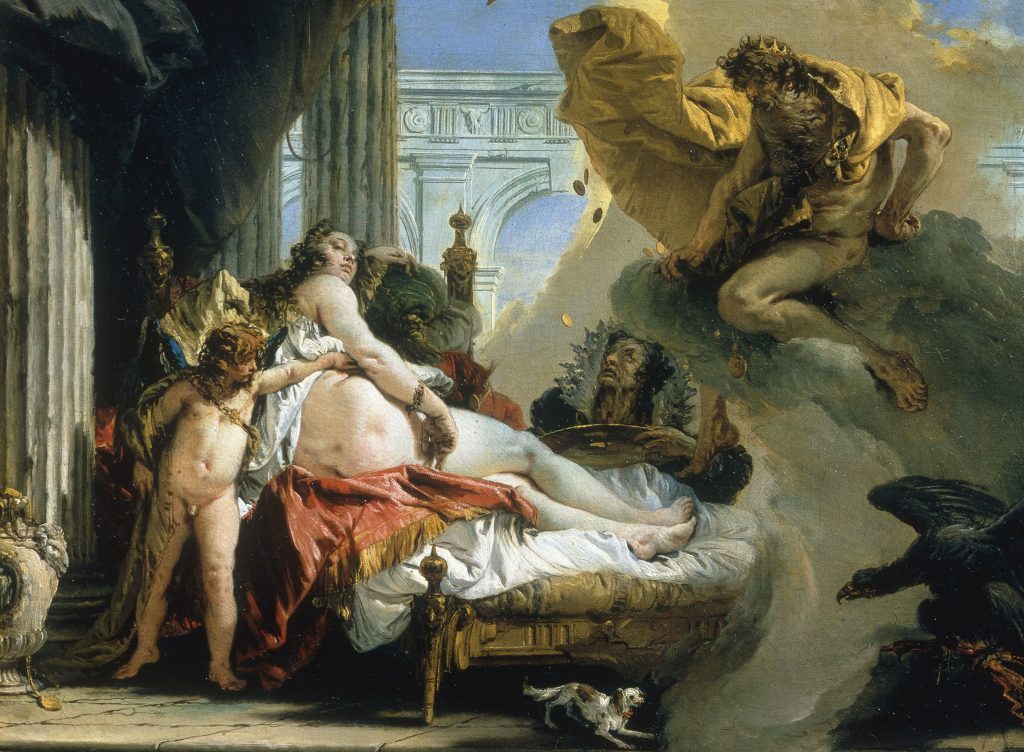
Giambattista Tiepolo, Jupiter appearing to Danae, 1736, Stockholm, Universitets Universitet © akg-images / Cameraphoto
“Eblouissante Venise” is not as dazzling as announced at Grand Palais even if famous castrato Farinelli is representing opera, Polichinelle announces Commedia dell’ Arte and Tiepolo glitters with Canaletto. Miro is superb with many paintings from his youth which I had never seen before and FIAC, Foire internationale d’art contemporain should be a good edition starting on Thursday 18 to Sunday 21.

Giandomenico Tiepolo, Polichinelles et Saltimbanques, 1797, Fondazione Musei Civici di Venezia, Ca’Rezzonico – Museo del Settecento Veneziano © Archivio Fotogra co – Fondazione Musei Civici di
A little string orchestra is placed in one of the galleries of Grand Palais to illustrate the importance of music and pleasure in Venice in the 18 th century. A good idea, but not enough to give sense to the exhibition where beautiful paintings are hanging next to carnaval scenes. There were six operas in Venice at the time, and composers were active in “ospedali”, the convents where young orphan girls were taught music and singing. Vivaldi started in one of these as music teacher.
Incredible decors of frescoes were made for palaces like Ca’Rezonnico or Palazzo Sagredo and Tiepolo paints Cleopatra’s history in Palazzo Labia. Venitian artists travel all around Europe and paint decors in England at Burlington House in London, Castle Howard and Kimbolton House. Farinelli and Faustina Bordoni sing Haendel. Rosalba Carriera goes to Paris where she impresses François Boucher. She paints a portrait of Watteau who reciprocates, she is very successful among the aristocracy especially with her pastels.
All these artists participate in the myth of Venice which will slightly disappear at the turn of the century when Bonaparte invades the city. And there is a slight sense of gloom in the show and no real focus. No magic at all.
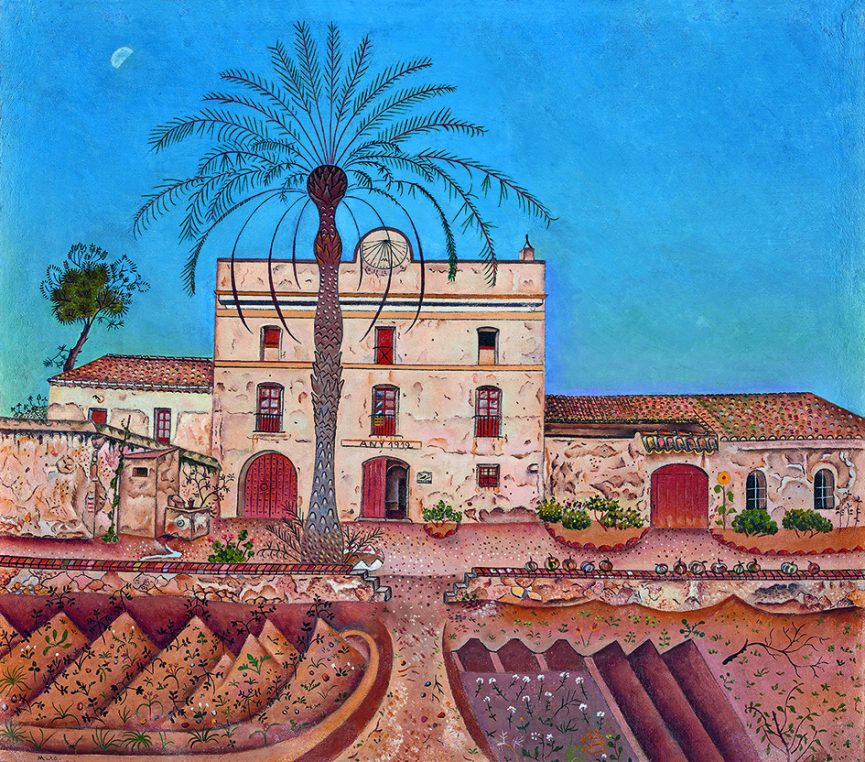
Joan Miró, La Maison du palmier, 1918 Museo Nacional Centro de Arte Reina Sofía, 1998 © Successió Miró / Adagp, Paris 2018 Photo Museo Nacional Centro de Arte Reina Sofía
Joan Miro’s retrospective is made of 150 major drawings, paintings, ceramics and sculptures which were chosen by Jean Louis Prat, former director of Foundation Maeght and a close friend of his. The early works are incredibly striking in their naïveté and realism, and his “Constellations” series painted in 1940 in Varengeville sur Mer are a high point of the show. A number of filmed interviews of Miro by Clovis Prévost in 1971, are worth watching for the emotion they procure.
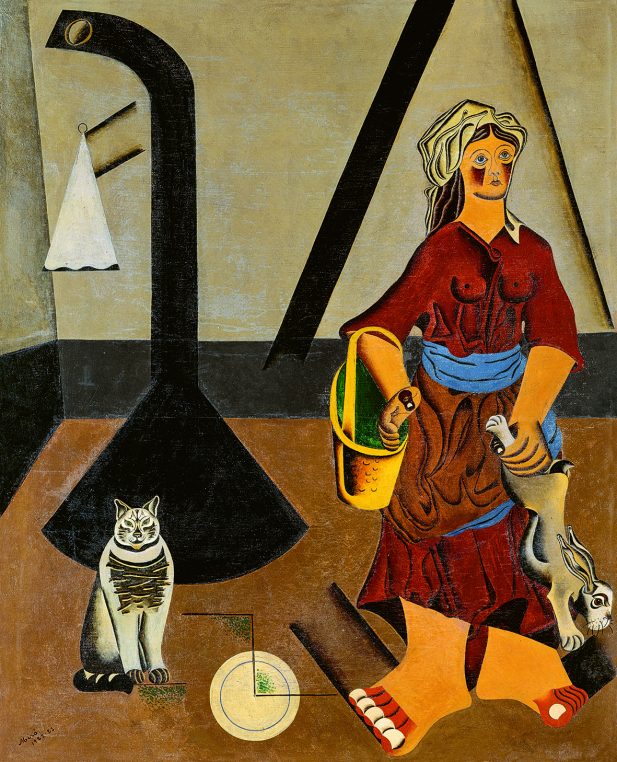
Joan Miró, Intérieur (La Fermière), 1922-1923 Centre Pompidou, Musée national d’art moderne dation 1997 © Successió Miró / photo Adam Rzepka
There are a number of portraits (1929) and sceneries (1918-23) painted in his Catalan country house of Mont-roig which played an important role in his art. “Vegetable garden and donkey”, “Intérieur”, (La fermière) the farmer, marks the evolution towards geometric and abstract paintings. It was acquired by Pierre Matisse in 1948.
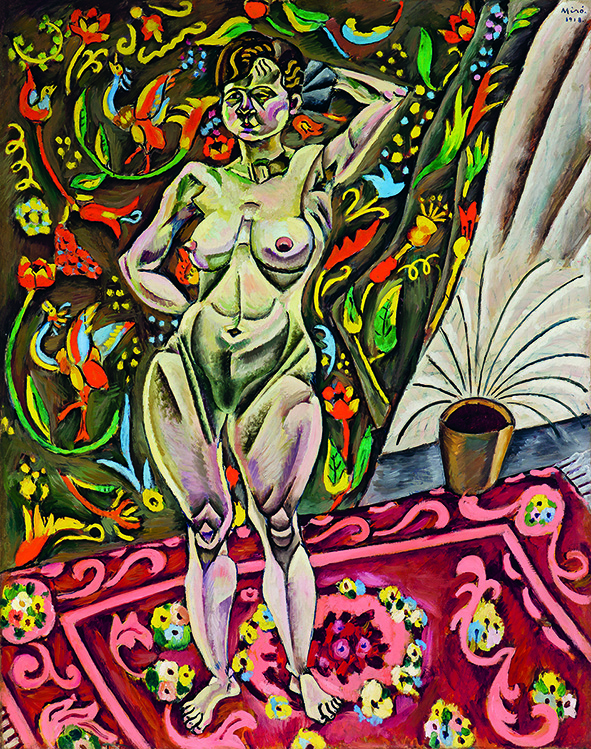
Joan Miro, Standing Nude, 1918, The Saint Louis Art Museum Friends Fund, 1965 © Successió Miró / Adagp, Paris 2018
I learned a lot about Miro and was happy to understand the evolution of his style in the late twenties from fauvism to cubism and then to surrealism. The influence of poetry on his art in ” A star caresses a negroe’s breast” which was lent by the Tate is totally magical. “Dog barking at the Moon”, came from the Philadelphia Museum of Art and three paintings “Bleu” lent by Centre Pompidou made for and ideal last room reminding us of his love for the Mediterranean.
A large room is also dedicated to ceramics and sculptures.
And FIAC starts on Thursday for four days. So many reasons to visit the Grand Palais this week! But remember that the street between Petit and Grand Palais is closed all week and will create havoc all around….
Venice is until January 21 and Miro until February 4.
Share this Post
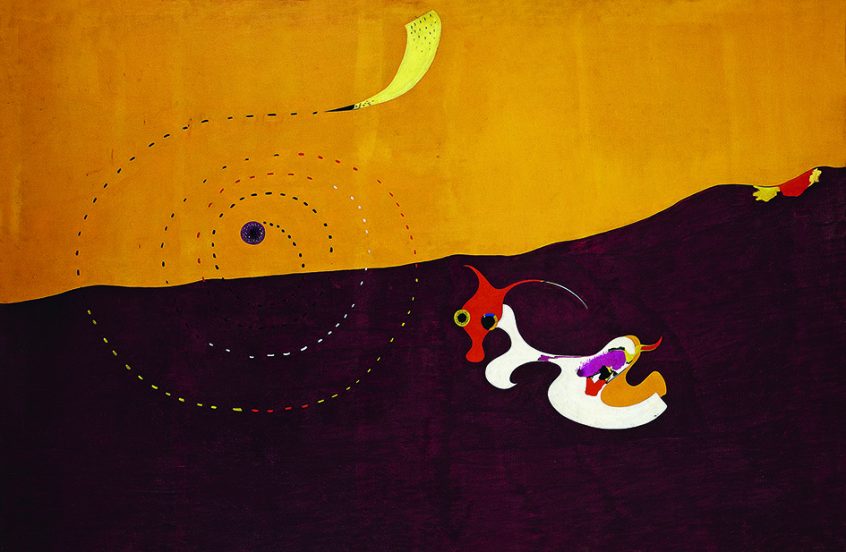
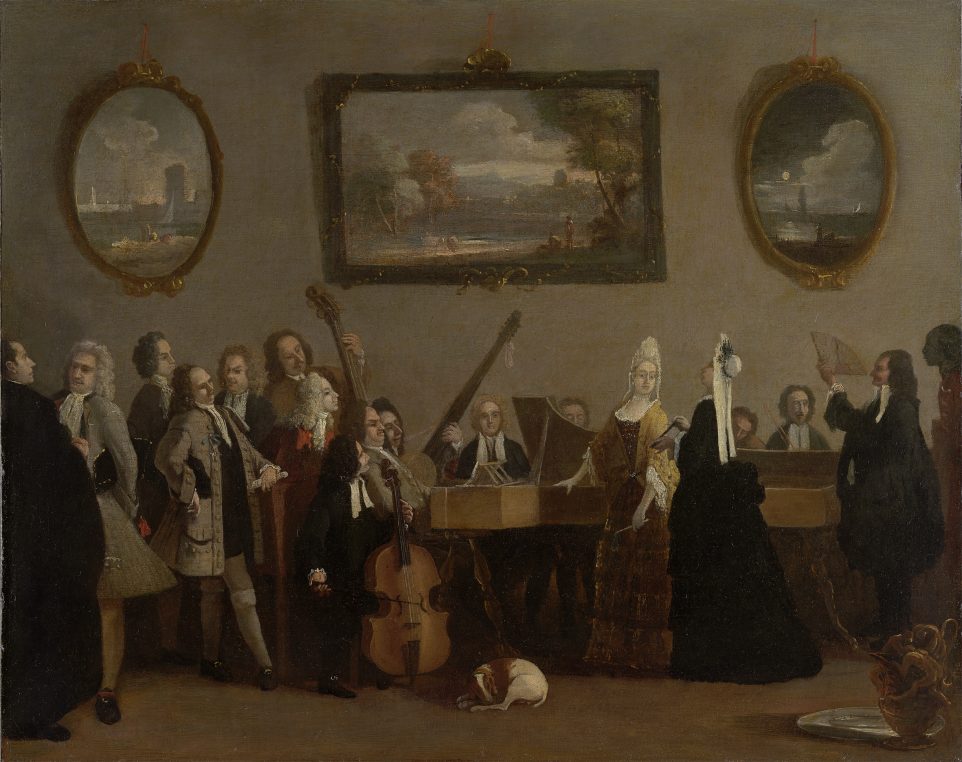
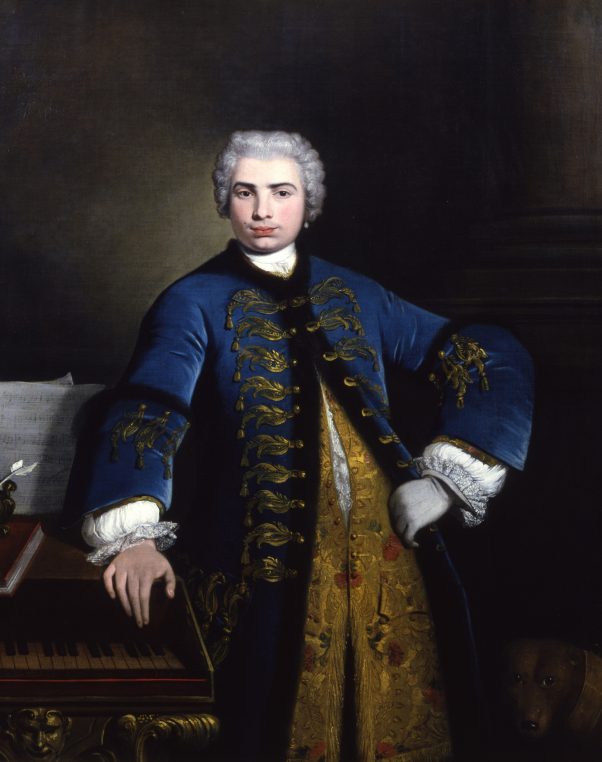
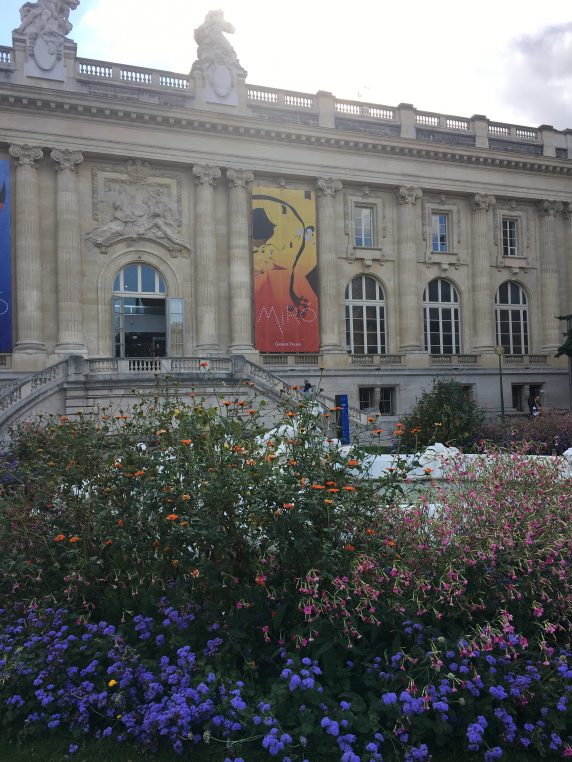
2 Comments on “At Grand Palais, Venice and Miro compete with FIAC for prime time”
Toujours aussi passionnant. Merci très chère Laure
Clémentine
I agree completely on the Venise exhibit…lacking focus and sparkle. The Miro was a delighful surprise. Wonderfully uplifting work! His last years were so productive!